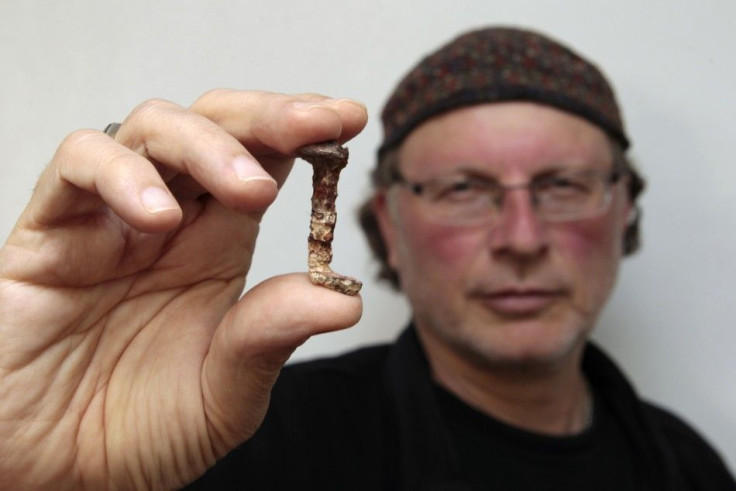Jesus Tomb Discovery Called A Hoax: Simcha Jacobvici And James Tabor 'Seeing Things That...Aren't There'

The controversy surrounding the so-called Jesus Tomb in Jerusalem continues over the 2,000-year-old Jonah Whale engraving which some archeologists claiming it represents the resurrection of Jesus Christ. Other scholars put forward the notion that the team led by filmmaker Simcha Jacobvici falsified the carving in a bid to deceive the public.
Jacobvici and others, including historian James Tabor, a professor and chair of religious studies at the University of North Carolina in Charlotte, used a robotic arm in 2010 in an attempt to exam and discover First century tomb in Jerusalem, which many believe contained the bones of Jesus Christ, as previously reported.
In a book released by the Tabor and Jacobvici, The Jesus Discovery: The New Archaeological Find that Reveals the Birth of Christianity, the pair detailed their findings and allege that they discovered a tomb that contains inscriptions with the names Jesus, Mary and Joseph next to each other. They do not believe the names in sequence were coincidental.
It's almost like a moonscape feeling of something eerie, something kind of silent -- a reverent feeling really, Tabor said, according to ABC News. Because these people died 2,000 years ago and now we are investigating their last memories, how they bury their dead, what they left behind, so that was there and then the excitement of, 'Well will there be something we'll find or will we find just another Jewish tomb'?
They also point out that they may have discovered an image of a whale swallowing Jonah, which was said to represent the resurrection of Christ.
This discovery by Tabor and Jacobovici will no doubt provide thoughtful new dialogue from both ends of the spectrum about one of the most discussed and divisive archaeological findings in recent history, said James Sanna in February, CEO of Discovery Times Square, where the duo detailed their controversial findings, reported the Post.
However, detractors are skeptical of their discovery and insist every inch be examined.
When is a fish not a fish? When it has handles, matching handles, said Mark Goodacre, an associate professor of religious studies at Duke University, according to ABC News. It's a vessel. It's a vase. It's a vase that looks like many of the ones that you'll find in the early Roman period.
He's seeing things that simply aren't there, Goodacre continued. His head is so full of 'DaVinci Code.
Another scholar, Robert Cargill, claimed that Tabor shared the image with him, but it does not appear the image he shared with the media. He claims it is possible that the image has been altered.
There are clearly handles on the top of the so-called 'Jonah fish' image, but Tabor and Jacobovici don't include them in their museum replicas or the CGI image, Cargill said, according to ABC. No credible scholar except those that work with or for Simcha on this or some other project believe his conclusions...The evidence does not support their sensational claims. But that doesn't stop them from wanting it to be true, so in their minds, it's true.
© Copyright IBTimes 2024. All rights reserved.





















